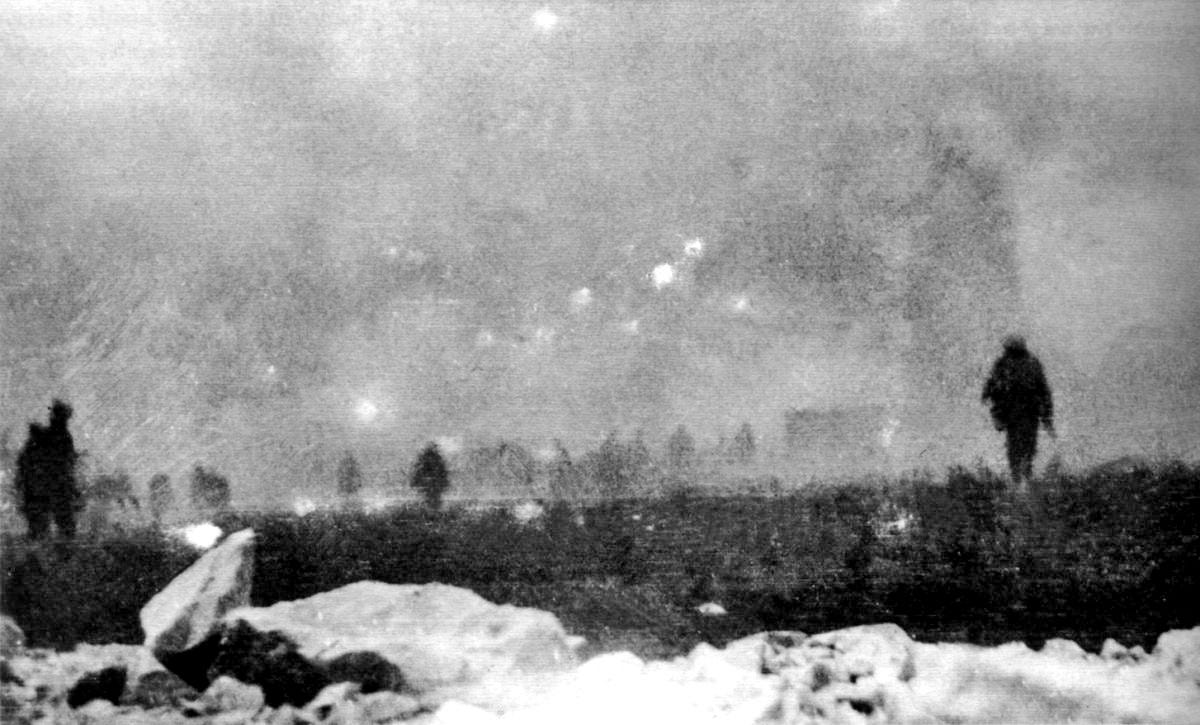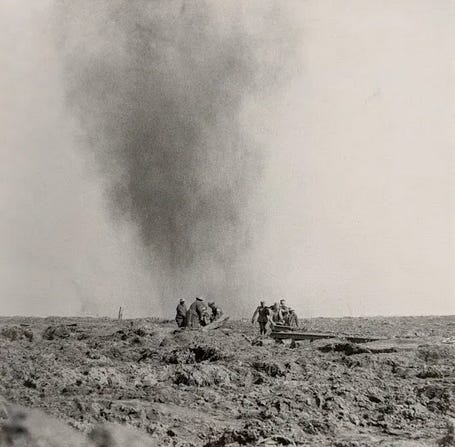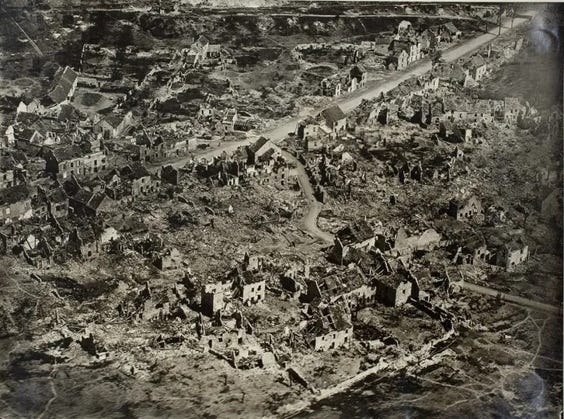It is September 25, 1915.
A twenty-six-year-old stretcher-bearer with the London Irish Rifles, named Patrick MacGill, is on the march toward Loos, a French city in the north near the Belgian border.

The coming battle at Loos — a combined operation with the French — will be the largest British attack of the year.

There, the British will use poison gas for the first time and also put new volunteer units into the field.
The hope is to break through German defenses and end the stalemate.

Patrick describes the march:1
“The Company marched from the village of Les Brebis at nightfall;
“the moon, waning a little at one of its corners, shone brightly amidst the stars in the east,
“and under it, behind the German lines, a burning mine threw a flame, salmon pink and wreathed in smoke, into the air.

“Our Company was sadly thinned now.
“It had cast off many---so many of its men at Cuinchy, Givenchy, and Vermelles.
“At each of these places there are graves of the London Irish boys who have been killed in action.

“Our way lay up the hill,
“at the top we came into full view of the night of battle,

“the bursting shells up by Souchez,
“the flash of rifles by the village of Vermelles,
“the long white searchlights near Lens,
“and the star-shells, red, green and electric-white, rioting in a splendid blaze of colour over the decay, death and pity of the firing line.

“We could hear the dull thud of shells bursting in the fields and the sharp explosion they made amidst the masonry of deserted homes;
“you feel glad that the homes are deserted,
“and you hope that if any soldiers are billeted there they are in the safe protection of the cellars.

“The road by which we marched was lined with houses all in various stages of collapse,
“some with merely a few tiles shot out of the roofs, others levelled to the ground.
“Some of the buildings were still peopled;
“at one home a woman was putting up the shutters and we could see some children drinking coffee from little tin mugs inside near the door;

“We marched down the reserve slope of the hill in silence.
“At the end of the road was the village;
“our firing trench fringed the outer row of houses.
“Two months before an impudent red chimney stack stood high in air here, but humbled now, it had fallen upon itself,
“and its own bricks lay still as sandbags at its base, a forgotten ghost with blurred outlines, it brooded, a stricken giant.

“The long road down the hill was a tedious, deceptive way;
“it took a deal of marching to make the village.
“Bill Teake growled.
“‘One would think the place was tied to a string,’ he grumbled, ‘and some one pullin' it away!’”

The British attack at Loos would fail with heavy losses.
Twenty thousand British and Commonwealth soldiers would be killed in the two-week battle there, their bodies never to be found.

Thousands more would be wounded, including Patrick, who will be struck on one of the last days of the fight.
The British commanding officer, blamed for the defeat at Loos, will be replaced.

And the war will go on for another three years.
*******************************
I’ll see you tomorrow.
— Brenda
Banner image: Elizabeth Southerden Thompson, “A London Irish at Loos” (1916)
MacGill, Patrick (1889-1963), “The Great Push,” 1916.














Share this post